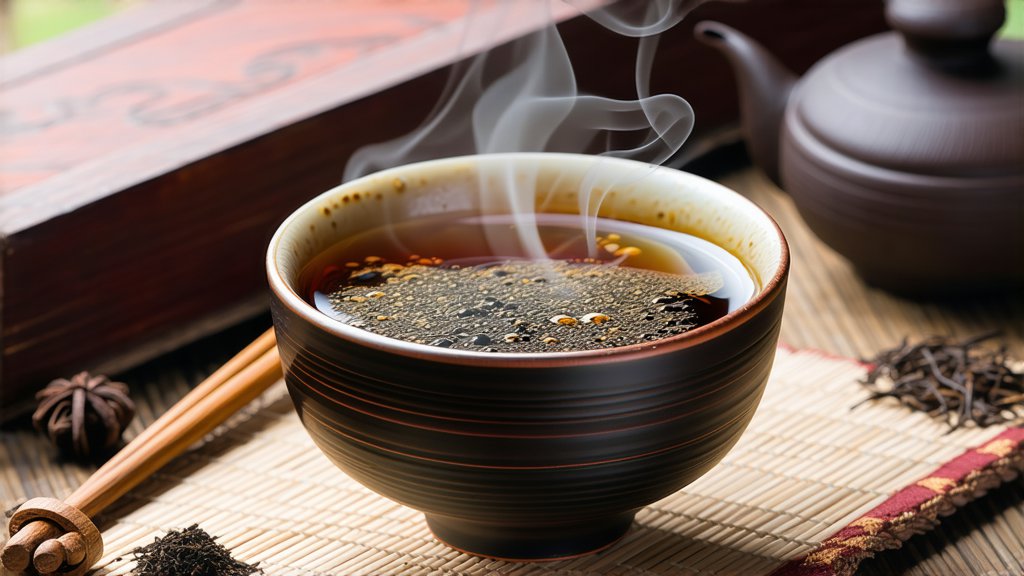
Pu-erh tea, a unique category within the vast spectrum of Chinese teas, has captivated tea enthusiasts worldwide with its rich history, intricate production process, and unparalleled aging potential. Originating from the Yunnan Province in southwestern China, this dark tea is named after the city of Pu'er, which served as a crucial trading hub along the ancient Tea Horse Road. Its journey from leaf to cup is a testament to centuries-old traditions and the artistry involved in crafting a beverage that transcends time.
Historical Roots
The story of Pu-erh tea dates back to the Tang Dynasty (618-907 AD), though it wasn't until the Ming Dynasty (1368-1644 AD) that it gained prominence as a compressed tea cake for easier transportation along trade routes. These tea bricks, or "bingcha," were not only practical but also facilitated the fermentation process during long journeys, enhancing their flavor and medicinal properties. Over time, Pu-erh evolved into two main categories: Raw Pu-erh (Sheng) and Ripe Pu-erh (Shou), each boasting distinct characteristics and aging processes.
Varieties and Characteristics
Raw Pu-erh, also known as Sheng Pu-erh, undergoes minimal processing post-drying, allowing it to age naturally over decades. This slow oxidation process imparts complex flavors and aromas, often described as earthy, woody, and floral with hints of dried fruit. As it matures, the once sharp and astringent taste mellows into a smooth, mellow brew, revealing deeper notes reminiscent of leather and aged wood.
Ripe Pu-erh, or Shou Pu-erh, on the other hand, undergoes a post-fermentation process called 'wet piling,' where piles of tea leaves are kept humid and warm to accelerate microbial activity. This method significantly reduces the bitterness and astringency found in raw pu-erh, resulting in a tea that is mellow and richly flavored from the start, with prominent earthy and sweet undertones. The color of the liquor ranges from deep red to almost black, reflecting its fully oxidized state.
Craftsmanship and Production
The creation of Pu-erh tea begins with the careful selection of large-leafed Camellia sinensis var. assamica plants native to Yunnan. After plucking, the fresh leaves undergo a series of steps including withering, rolling, sun drying (for raw pu-erh), or additional fermentation (for ripe pu-erh). For raw pu-erh, the leaves are then pressed into various shapes such as cakes, bricks, or tuocha (nestles), while ripe pu-erh undergoes a controlled fermentation process before being similarly shaped.
One of the most fascinating aspects of Pu-erh tea lies in its aging potential. Unlike many other teas that reach their peak freshness soon after production, Pu-erh improves with age, much like fine wine. Proper storage conditions—cool, dry environments away from strong odors—are essential to allow the tea to continue its transformation, developing more nuanced flavors and aromas over time.
The Art of Tasting Pu-erh Tea
To truly appreciate Pu-erh tea, one must engage in a mindful tasting ritual that involves all senses. Begin by admiring the dry leaves' appearance, noting their size, shape, and color variations. Next, observe the wet leaves after steeping, appreciating their suppleness and any remaining vein structures.
The aroma is an integral part of the experience; raw pu-erh often exudes fresh, vegetal scents with subtle hints of spice, while ripe pu-erh offers a more robust, earthy fragrance with notes of damp forest floors and aged wood. As you inhale deeply, try to identify different layers of scent that evolve as the tea cools.
Tasting involves savoring the tea's complexity and depth. Take small sips, allowing the liquid to coat your palate fully before swallowing. Notice the initial taste, which might be astringent or slightly bitter for raw pu-erh, gradually giving way to sweeter, more rounded flavors. Ripe pu-erh, being more mellow initially, reveals its richness through a velvety texture and a long-lasting, satisfying finish. Pay attention to the aftertaste, which can linger for minutes, revealing further nuances of the tea's character.
Conclusion
Pu-erh tea stands as a living testament to China's rich cultural heritage and the profound connection between nature and human craftsmanship. From its humble beginnings as a means of preservation and trade to becoming a globally cherished beverage, Pu-erh encapsulates the essence of time, tradition, and transformation. Whether you are drawn to the adventurous spirit of raw pu-erh or the comforting embrace of ripe pu-erh, exploring this enigmatic tea promises a sensory journey that deepens with every sip, echoing the wisdom of ages past and inviting you to partake in a legacy that continues to unfold.
prompt: A serene tea ceremony featuring a steaming cup of Pu-erh tea surrounded by traditional Chinese tea utensils.
keywords: Pu-erh tea, fermentation, Yunnan Province, Camellia sinensis, aged tea